-
Posts
1,065 -
Joined
-
Last visited
-
Days Won
1
Content Type
Profiles
Forums
Blogs
Gallery
Events
Store
Posts posted by Graham Stewart
-
-
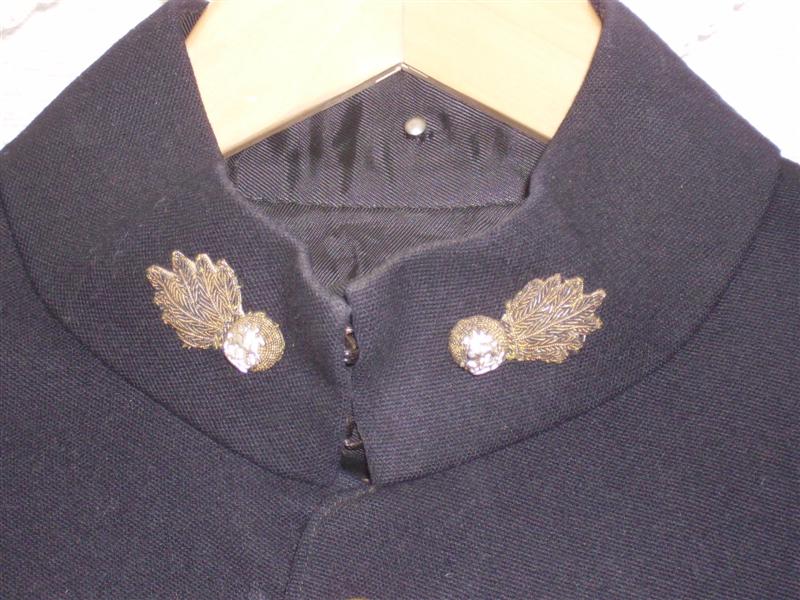
The collar is complete with the bullion and silver collar badges of the R.N.F., but worn horizonitally, with St.George and the Dragon aligned to be worn as a pair.
Arranged around the interior of the collar is a series of five small metal studs, one of which can just be seen, the purpose of which is unknown, but which must have been very uncomfortable for the wearer, as this studding arrangement is not found on the collars of O/R's No.1 Dress 'blues'.
0 -
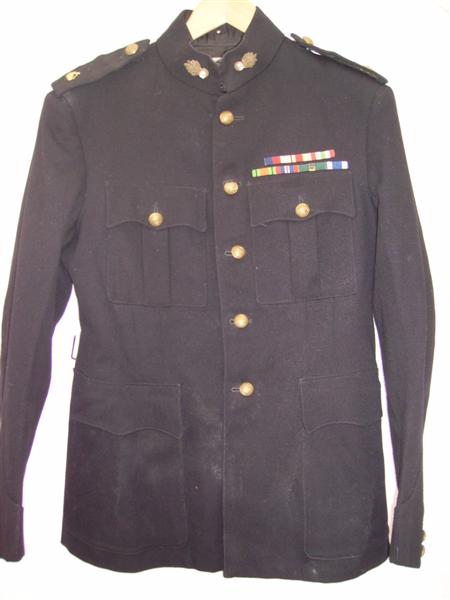
Latest edition to my R.N.F. uniforms is this lovely officers pattern No1. Dress "blues" jacket belonging to Captain later Major A. Berryman. A wartime veteran and member of the Territorial Army, tracing Capt Berryman hasn't proved too easy and so I have little in the way of information to tell.
The jacket itself seems to have been made around 1952 by "George Downie & Sons" - Military & Mufti Tailors, 62 & 64 Grey Street, Newcastle-upon-Tyne and is a lovely example of this pattern of jacket for officers.
0 -
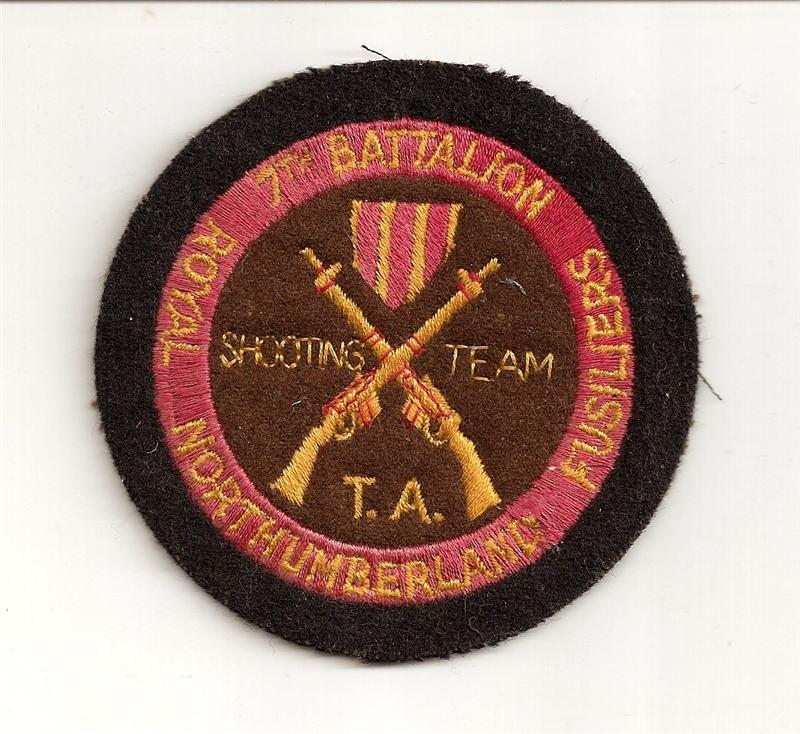
Well back again with some more interesting R.N.F. items and the first of these is this unusual shooting badge to the 7th Bn, R.N.F.(T.A.) Shooting Team, which was worn possibly as a blazer badge sometime during the 1950's/60's and is the first of it's type that I've ever come across.
It's these particular types of badges that we know little about, as generally they were produced locally and by the unit involved and "not at public expense". How many members were actually in the Shooting Team and how many badges were actually produced is unkown to me at this present time.
0 -
Stunning - wish it had been Northumberlands, as I certainly would have made an offer. What makes this tunic even nicer is the fact that it belonged to a 'Volunteer' Clr Sgt, whereas in reality the majority of them were Colour Sgt's on secondment from the Regular Battalions, marking time before taking retirement.
0 -
How fascinating - even when serving I still had the chance to vote by proxy, but don't think I did. The way I've always looked at it, was that I was voting for those who could serve my country best and have voted for all three major political parties at various times. My dad was an ex-Grenadier Guard, a miner and Labour Party voter through and through. I think he was a bit put out when I voted for Maggie when I left the Navy in 1981, but even he got fed up with some of left wingers in the end and voted Conservative.
0 -
Probably of no interest but if I'm correct they were regarded as Absent Voters and pre-1914 Household Voting Lists, do show them by their service i.e. Navy or Army; By 1918, vast volumes of them known as the "Absent Voters List" appeared for those serving in the Great War and I have copies of these for nearly all of Northumberland & Durham. I also have Voters Registration cards in my collection for those serving during this period.
0 -
And a link to the uniform of the 18th Hussars;-
http://www.ebay.co.uk/itm/18th-QUEEN-MARYS-OWN-HUSSARS-History-Traditions-1910-/370538818948
0 -
This is a link to a Gale & Polden Postcard of the XRH, and the uniform changed little after the Great War;-
http://www.ebay.co.uk/itm/WW1-10th-PRINCE-WALESs-OWN-ROYAL-HUSSARS-Gale-and-Polden-Postcard-/160705110502
I have also seen XRH jackets for sale on that well known auction web-site, but they ain't cheap.
0 -
Probably a bit with this, but try this link where a couple of nice photo's of the P.O.Rifles are shown.;-
http://www.britishbadgeforum.com/forums/showthread.php?t=22549
0 -
Mmmmmmm - very interesting, but possibly added too. The Royal Artillery did infact wear blue as opposed to scarlet, although some Volunteer Artillery units are known to have worn scarlet, with blue facings, but in their case the lace was silver and not gold.
In my opinion it's an 1881 infantry officers pattern scarlet jacket and it would be nice to see the buttons, especially those with the '2' on them, as it would be nice if they were 2nd Foot.
0 -
OK - What you have displayed is an other ranks cap and collar badges and an officers shoulder title. Officers of the Tyneside Irish wore standard pattern NF officers bronzed cap and collar badges.
The Tyneside Irish other ranks wore the standard O/R's pattern cap badge and special shoulder titles, which consisted of numeral - i.e. '24'; '25'; '26'; '27'/ HARP/NF.
TI badges are often found with sliders, reputed to be cap badges - they didn't wear a distinctive cap badge, and all genuine TI badges have lugs on the reverse side. In John's photo the Cpl has adopted the harp shoulder badges as collar badges, later a special harp badge was introduced for wear by senior NCO's, as a collar badge.
0 -
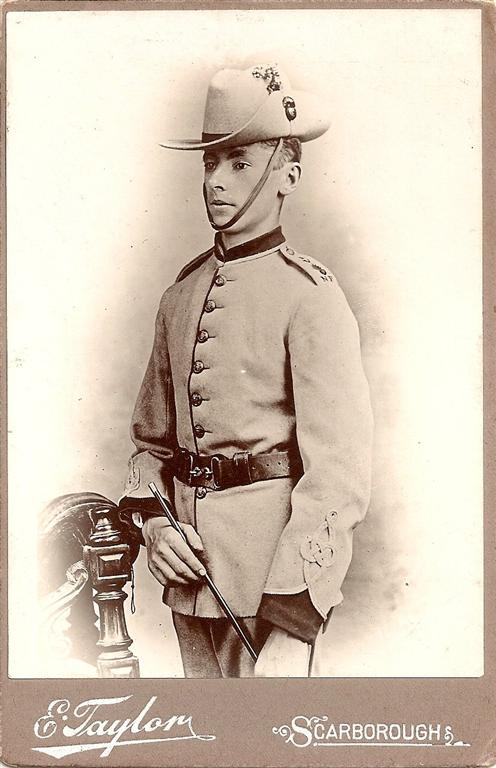
Been away from here for a while, and just had to add this one for viewing. A member of the 1st Volunteer Battalion, Northumberland Fusiliers taken during annual camp Scarborough Race Course, Yorkshire, 1903. A cabinet photo of exceptional quality, where the embroided scarlet on rifle grey "1/V/Bomb/NF" can clearly been seen. Blackened 'rifle' pattern buttons, scarlet collar & cuffs with blackend cap badge on the rifle grey, slouch hat. To top it all this lad has also included what appears to be 'lucky heather' to the upturned side, which obviously would be removed on return to camp.
0 -
South African Officers' Decoration
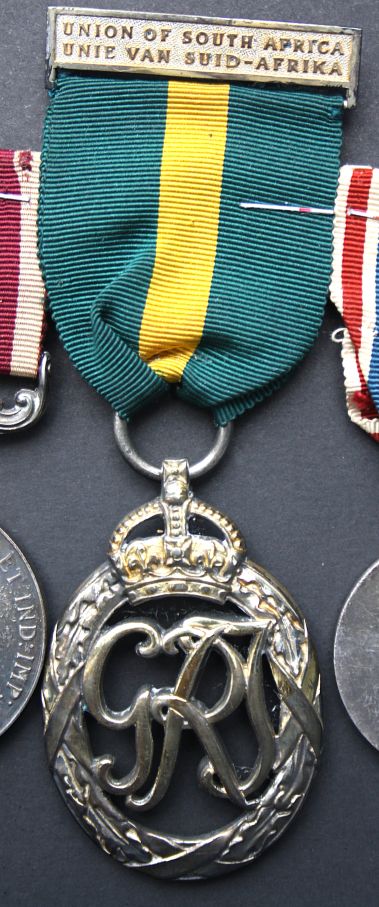
In the UK the equivalent of this was known as the "Volunteer" later "Territorial" Decoration, awarded to officers of the Volunteer Force pre-1908 and Territorial officers post-1908.
0 -
Noor - what a lovely item. I have a few to the Northumberlands, but nothing as early as this. I wonder if the Colours survive, as I believe on the disbandment of the Irish Regt's in the 1920's, their Colours were brought back to England and believe they may be at the RMC Sandhurst.
0 -
ColinRF - know this is a bit late, but have you seen the actual cine photage of the Lancashire Fusiliers during the Battle of the Somme, 1st July 1916. Very moving with men moving up and casualties being brought down the trenches away from the Battle Line. See below.
0 -
The Dutch Flag upside down is used by the German State Schlesvig-Holstein. Are you sure it is blue and not bleeched black?
Actually might not be as daft as it seems. I'm sure some Imperial/State German units wore the slouch hat at the turn of the last century and in that case the colour grey/green would be correct.
0 -
Very nice - all I have is scarlet for this period. SD for this period is a rare as rocking horse sh*t. Which I.Y. unit does your slouch hat belong to?
0 -
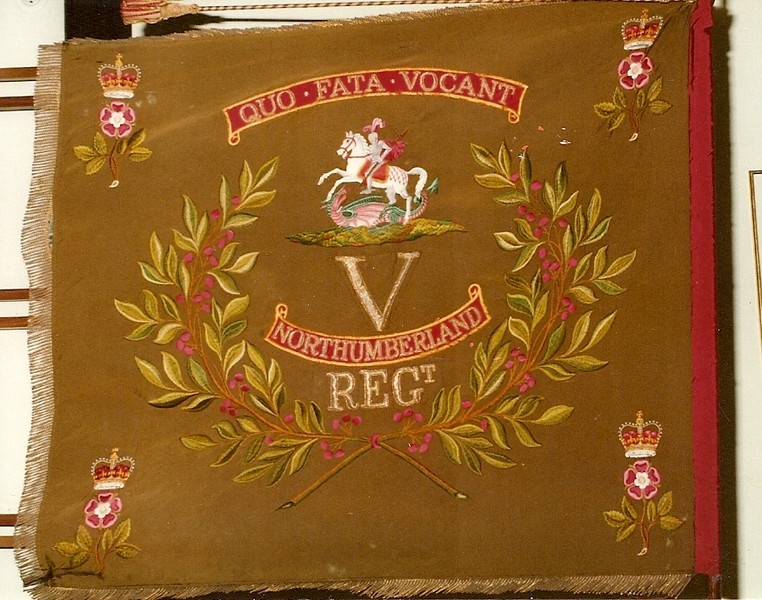
The Northumberland Fusiliers are one of the few Regiments which have been granted the carrying of a third Colour. This third Colour known as the Drummers Colour isn't adorned with Battle Honours as are the Kings/Queens and Regimental Colours, but it was carried on parade by the Drummers. The attache illustration was presented to the Drummers c.1954.
0 -

Another interesting pint by Canton-Woodville c.1910, showing members of the 4th Bn, N.F.(T.F.). However I'm always unsure when looking at this one, due to the fact that Alnwick Castle appears in the background, which was the H.Q. of the 7th Bn, N.F.(T.F.). The 4th Bn at this time had their H.Q. in Hexham and were still wearing "Rifle" grey and only began to change over to scarlet in 1910, which is when this print was sketched. There are also others bits and pices of uniform detail which show that Woodville omitted some of the accuarcy of other military artists.
0 -
Stuart - thanks for the additional details and dating. I'm pleased you have your DR's to hand, as I'm trying to remember it all off the top of my head, sometimes unsuccessfully.
0 -
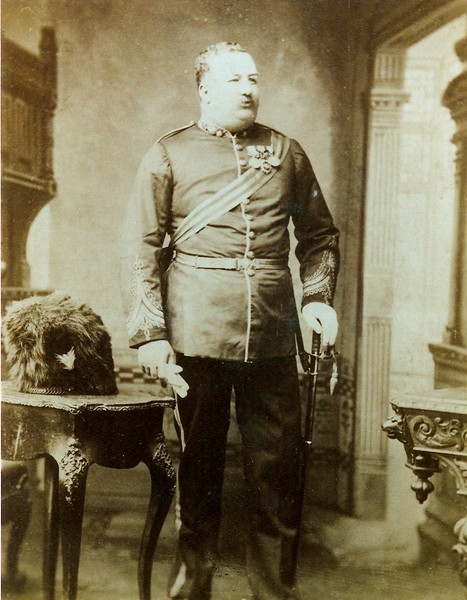
Captain & Adjutant Dasley. Supposedly taken 1870, but again doubtful as the uniform is the 1881 officers pattern with the re-adopted "gosling green" facings, which didn't come back into wear until the early 1900's. This makes me wonder if this photo was taken long after his retirement.
0 -
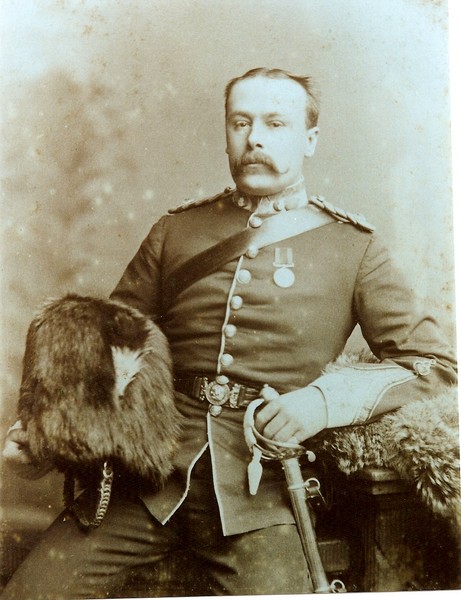
Lieut & Quartermaster Fastnett taken c.1900. again wearing the officers 1881 pattern uniform with white facings and clearly showing the red and white feather plume. The officers bearskin caps unlike the other ranks were "sized", that is to say they were of different height depending on the height of the officer wearing it.
0 -

Captain and Quartermaster Drake taken 1885, with signature. Here we see the new pattern 1881 officers uniform, with the new white facings adopted for "none-Royal" regiments. The officers bearskin again showing the red over white feather plume.
0 -

Now for some characters from the Northumberlands showing change of dress over the years. Firstly Lieut K.Tynte, supposedly taken c.1865. However his collar rank, a crown would be that of a Major and so must have been taken some years later. The cap is interesting as the first were of sealskin, shortly replaced by those of racoon. Later the officers of Fusiliers regiments would adopt those of Bearskin. The plume here is of feather and always had been for NF officers, whereas the O/R's wore the more durable horse hair plume.
0




The Royal Northumberland Fusiliers - (***MODERATORS' CHOICE)
in Great Britain: Militaria: Badges, Uniforms & Equipment
Posted
The shoulder straps are detachable and held in place with a gilt 'screw' button and the Majors rank Crown is gilt, with purple velvet material to the interior of the Crown.